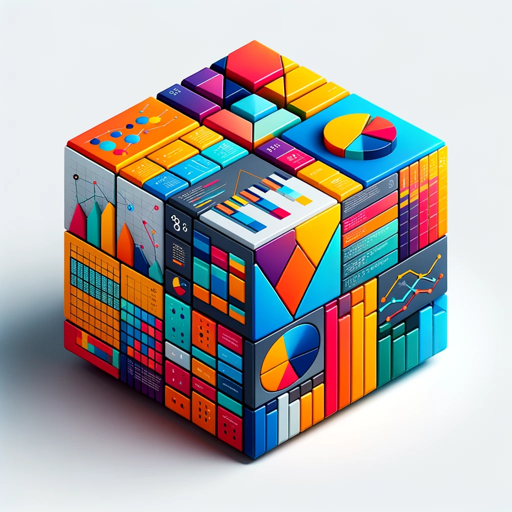System Design GPT-AI-powered system design insights.
AI-powered system design expert.
How do I design a URL shortening service?
Explain the trade-offs of SQL vs NoSQL
Design a hotel booking service
What is sharding?
Related Tools
Load More
Electronics Hardware Design GPT
Expert in electronics and hardware design, circuit and PCB guidance

Design System GPT
Mentor for designers on creating modern design systems

GPT Builder Builder
Your guide to creative GPT building.

Software System Design GPT
Designs systems and guides on using mermaid in draw.io

SystemVerilog GPT
Expert in SystemVerilog and UVM, with comprehensive knowledge from various top sources.

RTL GPT
Expert in Hardware Design and Verification
20.0 / 5 (200 votes)
Introduction to System Design GPT
System Design GPT is a specialized version of ChatGPT tailored for the design and architecture of large-scale software systems. It functions as a subject-matter expert, providing guidance and insights on system design principles, best practices, and specific design challenges. The primary purpose of System Design GPT is to help users understand the complexities of system architecture, from high-level design considerations to detailed implementation specifics. For example, it can assist in designing a scalable distributed system, optimizing database schemas, or evaluating the trade-offs between different cloud deployment strategies.

Main Functions of System Design GPT
High-Level System Design
Example
Guiding the design of a scalable social media platform.
Scenario
A startup needs to create a new social media app capable of handling millions of users. System Design GPT helps outline the architecture, including microservices, databases, and caching layers, ensuring scalability and high availability.
Database Design and Optimization
Example
Optimizing a database schema for an e-commerce platform.
Scenario
An e-commerce company wants to improve its database performance. System Design GPT provides insights into indexing, sharding, and replication strategies to enhance read and write performance.
API Design
Example
Designing RESTful APIs for a fintech application.
Scenario
A fintech startup is developing an application that requires secure and efficient APIs for transactions. System Design GPT assists in designing RESTful APIs, including authentication mechanisms, rate limiting, and versioning.
Ideal Users of System Design GPT
Software Engineers
Software engineers working on complex systems benefit from System Design GPT's expertise in optimizing architecture, improving performance, and ensuring scalability. It helps them understand trade-offs and best practices in system design.
Technical Interview Candidates
Candidates preparing for technical interviews at top tech companies use System Design GPT to practice and refine their system design skills. It provides detailed feedback and examples to help them succeed in interviews.

How to Use System Design GPT
Visit aichatonline.org for a free trial without login, also no need for ChatGPT Plus.
Access the service without any registration or subscription required.
Understand your system design requirements.
Before using System Design GPT, clearly define what you need help with, such as scalability, reliability, data flow, or specific system components.
Engage with the GPT by asking specific, detailed questions.
The more detailed your questions, the better the responses you will receive. Focus on aspects like database design, API endpoints, and handling high loads.
Review and iterate on the responses.
Use the initial answers to refine your questions and dive deeper into particular areas of interest or concern.
Implement the suggested design principles and test at scale.
Apply the recommendations in your system and test to ensure they meet your performance and scalability requirements.
Try other advanced and practical GPTs
Global Trade Expert
AI-Powered Global Trade Navigator

Text Tailor
Enhance Your Writing with AI Power

Therocial Scientist
AI-powered solutions for scientific research and coding.

What should I watch?
Your AI-powered entertainment guide.

SEO Mentor
AI-powered SEO Guidance

TarotGPT
AI-powered tarot readings, anytime, anywhere.

Golf Buddy
AI-powered insights for your golf game.

Voxscript Has Moved
AI-Powered Assistance for All Your Writing Needs

Photography Prompt Builder
Create stunning AI photography prompts effortlessly.

News Insight
AI-powered fact-checking tool.

DAX GPT
AI-powered insights for Power BI.

ChatGaia
AI-powered Astrophysical Data Query Tool

- Optimization
- System Design
- Architecture
- Scalability
- Reliability
Detailed Q&A about System Design GPT
What is System Design GPT?
System Design GPT is an AI-powered tool designed to assist engineers and developers in creating scalable, reliable, and efficient system architectures. It provides detailed insights and recommendations based on best practices and common design patterns.
How can System Design GPT help in designing a scalable system?
System Design GPT offers guidance on key aspects like database sharding, load balancing, caching strategies, and microservices architecture to ensure that your system can handle increased loads and traffic efficiently.
Can System Design GPT assist with database schema design?
Yes, it can provide detailed advice on creating efficient database schemas, indexing strategies, and data partitioning methods to optimize read and write operations and maintain data integrity.
What are the typical use cases for System Design GPT?
Typical use cases include designing large-scale web applications, optimizing cloud-based systems, improving existing system performance, and planning for future scalability and redundancy.
How does System Design GPT handle trade-offs in system design?
System Design GPT helps you understand and evaluate the trade-offs between different design choices, such as consistency vs. availability, latency vs. throughput, and monolithic vs. microservices architectures.